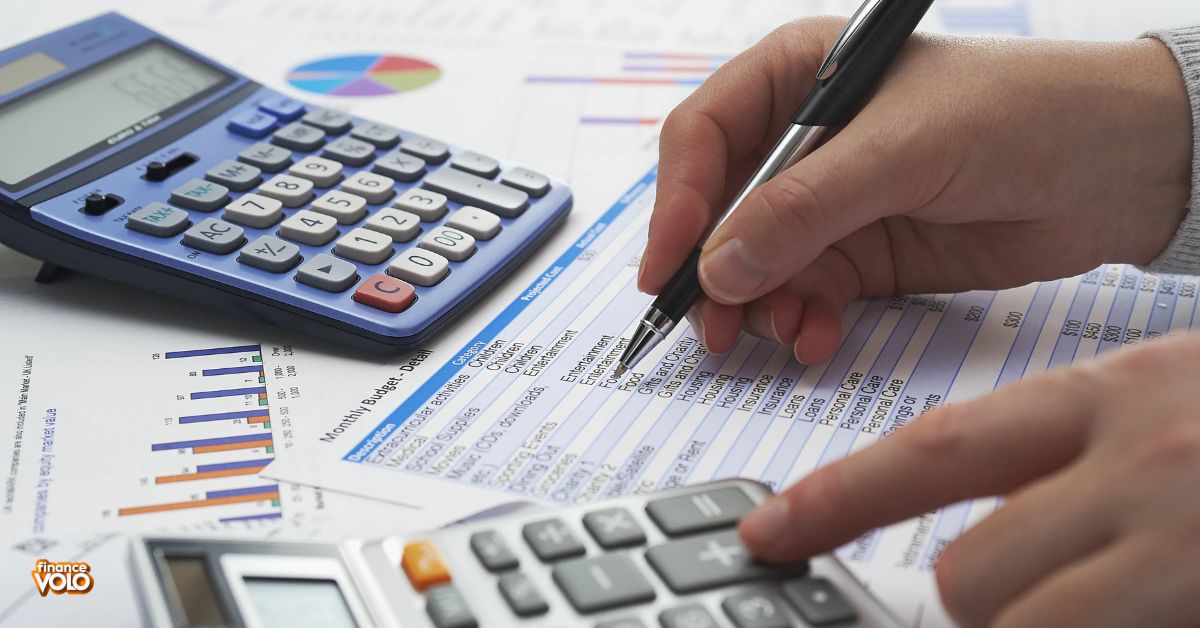In the realm of business finance, cost accounting stands as a beacon of insight, unraveling the intricacies of expenditure with precision and purpose. It’s not merely about crunching numbers; it’s a strategic ally, guiding organizations through the labyrinth of costs from production to distribution.
Cost accounting illuminates the path to financial clarity, offering managers invaluable insights to streamline operations, allocate resources efficiently, and maximize profitability. It’s the silent hero behind the scenes, ensuring every financial decision is informed and optimized for success.
Meaning of Costing
Costing is essentially the process of determining the expenses incurred in producing goods or services. It involves analyzing and allocating costs to various components of a product or service, such as materials, labor, and overhead. Costing helps businesses understand the financial implications of their operations and make informed decisions to improve profitability.
Cost Accounting Systems
The cost accounting systems are the backbone of financial management in businesses of all sizes. These systems help companies track and analyze their expenses with precision and efficiency. By organizing financial data into clear categories, cost accounting systems provide valuable insights into where money is being spent and how it can be optimized.
With the help of modern technology, these systems have become even more sophisticated, allowing for real-time monitoring and analysis. From traditional methods to cutting-edge software solutions, cost accounting systems are essential tools for informed decision-making and sustainable growth.
What is the purpose of cost accounting?
The cost accounting serves a vital role in the business world by providing clarity on financial matters. Its primary purpose is to help companies understand and manage their expenses effectively. By analyzing costs associated with production, distribution, and other operations, cost accounting enables businesses to make informed decisions to improve efficiency and profitability.
It assists in budgeting and forecasting, allowing companies to plan for the future with confidence. In essence, the purpose of cost accounting is to empower organizations with the knowledge needed to navigate the complex landscape of finance and achieve sustainable success.
History of Cost Accounting
Cost accounting has a rich history dating back to ancient civilizations, where rudimentary methods were used to track expenses in agricultural and trade activities. However, it wasn’t until the industrial revolution that modern cost accounting principles began to emerge. Pioneers like Adam Smith and Benjamin Franklin contributed significantly to its development during this period.
Throughout the twentieth century, advancements such as standard costing and variance analysis further refined cost accounting practices. Today, with the advent of technology and evolving business needs, cost accounting continues to evolve, integrating with modern systems like ERP and embracing new trends like activity-based costing and lean accounting.
Minimize Cost Accounting Efforts With Accounting Software
Accounting software offers a powerful solution to streamline and simplify cost accounting processes for businesses of all sizes. By automating tasks like data entry, calculation, and reporting, it minimizes the time and effort required for cost accounting activities. With user-friendly interfaces and customizable features, these tools empower users to manage costs efficiently without the need for extensive accounting knowledge.
It provides real-time insights into cost trends and patterns, enabling businesses to make informed decisions and optimize their financial performance. Overall, investing in accounting software can significantly reduce the burden of cost accounting efforts and enhance overall efficiency.
Formulas for Cost Accounting
Cost accounting involves key calculations for cost control and profit goals, while integrated software handles the complexities, freeing management to focus on business strategy.
Break-even formula
The break-even formula calculates the point at which total revenue equals total costs, resulting in neither profit nor loss. It is determined by dividing fixed costs by the contribution margin per unit. This formula helps businesses understand the minimum sales volume needed to cover all expenses and start generating profit.
Contribution margin
Contribution margin is a vital metric in cost accounting, representing the difference between sales revenue and variable costs. It shows how much revenue is available to cover fixed costs and contribute to profit. High contribution margins indicate strong profitability, while low margins may signal the need for cost reduction or pricing adjustments.
Target net income
Target net income is the desired level of profit a business aims to achieve within a specific period, typically a fiscal year. It serves as a benchmark for assessing performance and guiding financial decisions. By setting clear targets, businesses can align their strategies and operations to meet their profit objectives effectively.
Gross margin
Gross margin is a crucial financial metric representing the difference between revenue and the cost of goods sold. It indicates the profitability of products or services before considering other expenses. Calculated by subtracting the cost of goods sold from total revenue, a higher gross margin signifies better profitability and operational efficiency.
Pre-tax dollars needed for purchase
Before making a purchase, it’s crucial to determine the pre-tax amount required. This involves calculating the total cost of the item or service before any taxes are applied. By knowing the pre-tax amount, you can accurately budget and plan for the purchase, ensuring you have the necessary funds available.
Price variance
Price variance compares actual prices with budgeted prices for materials or services. A favorable variance means lower costs, while an unfavorable one indicates higher expenses. Analyzing these variances helps businesses pinpoint cost-saving opportunities and enhance efficiency in procurement and production processes.
Efficiency variance
Price variance compares actual prices with budgeted prices for materials or services. A favorable variance means lower costs, while an unfavorable one indicates higher expenses. Analyzing these variances helps businesses pinpoint cost-saving opportunities and enhance efficiency in procurement and production processes.
Variable overhead variance
Variable overhead variance refers to the difference between the actual variable overhead costs incurred and the standard variable overhead costs expected for a specific level of production. It helps businesses assess efficiency in using resources and identifies areas for improvement in controlling variable overhead expenses.
Ending inventory
Ending inventory refers to the value of goods and materials on hand at the end of an accounting period. It includes products ready for sale as well as raw materials and work in progress. Calculating ending inventory accurately is crucial for determining cost of goods sold and assessing financial performance.
Cost Accounting Principles to Know
Cost accounting principles are essential guidelines for effectively managing costs within a business. They help categorize costs, measure them accurately, and control expenses to improve profitability. By understanding these principles, businesses can allocate costs appropriately, analyze spending patterns, and make informed decisions to enhance financial performance and efficiency.
Matching principle
The matching principle is a fundamental concept in cost accounting that ensures expenses are recorded in the same period as the revenue they generate. By matching costs with the related revenue, businesses can accurately measure profitability and make informed decisions about pricing, budgeting, and resource allocation. It promotes transparency and accuracy in financial reporting.
Principle of conservatism
The principle of conservatism in accounting suggests that when faced with uncertainty, accountants should err on the side of caution. This means recognizing expenses and liabilities sooner rather than later and being cautious about recognizing potential gains until they are realized. It ensures that financial statements reflect a realistic picture of a company’s financial position.
Importance of cost accounting in business
Why it’s important for enterprises?
- Financial Insight: Cost accounting provides enterprises with a deep understanding of their financial performance by accurately tracking expenses and analyzing cost patterns.
- Strategic Decision-Making: It enables enterprises to make informed decisions about pricing, budgeting, resource allocation, and overall strategy.
- Competitive Advantage: By identifying areas of inefficiency and optimizing costs, enterprises can gain a competitive edge in the market.
- Profitability Enhancement: Cost accounting helps enterprises enhance profitability by identifying opportunities to reduce costs and increase revenue.
- Long-Term Sustainability: It aids in the long-term sustainability of enterprises by providing tools and insights for managing resources effectively and adapting to changing market conditions.
Why it’s important for small and medium-sized businesses?
- Resource Optimization: Cost accounting helps SMBs optimize their limited resources by identifying areas of inefficiency and reducing unnecessary expenses.
- Financial Control: It provides SMBs with better control over their finances by tracking expenses, monitoring budgets, and forecasting future costs.
- Competitive Positioning: Cost accounting enables SMBs to compete effectively in the market by helping them understand their cost structures and pricing strategies relative to competitors.
- Profitability Improvement: By analyzing costs and identifying opportunities to reduce expenses, cost accounting can contribute to improving SMBs’ profitability.
- Decision Support: It aids SMBs in making informed decisions about investments, pricing, product development, and other strategic initiatives by providing accurate financial data and analysis.
Scope of cost accounting
Cost accounting encompasses a broad range of activities aimed at managing expenses and maximizing efficiency within an organization. Its scope includes the identification, classification, and analysis of various costs associated with production, distribution, and other business operations.
It extends to budgeting, forecasting, and performance evaluation, providing valuable insights into financial performance and aiding in strategic decision-making. From tracking inventory costs to assessing the profitability of different products or services, the scope of cost accounting is vast and essential for businesses to thrive in today’s competitive landscape.
Types of cost accounting
Cost accounting encompasses various types or methods, each offering unique perspectives on cost analysis and management.
Here are some of the most prevalent ones:
- Job Costing: Allocates costs to individual jobs or projects, ideal for industries like construction or custom manufacturing.
- Process Costing: Distributes costs across homogeneous units of production, suitable for industries with standardized processes like food manufacturing.
- Activity-Based Costing (ABC): Assigns costs based on activities that consume resources, providing a more accurate picture of product or service costs.
- Variable Costing: Focuses on variable costs associated with production, excluding fixed costs, useful for decision-making in the short term.
- Marginal Costing: Analyzes the impact on costs and profits of producing one additional unit, aiding in pricing and production decisions.
- Standard Costing: Sets predetermined cost standards for materials, labor, and overhead, facilitating performance evaluation and variance analysis.
- Lean Accounting: Streamlines accounting processes to align with lean manufacturing principles, emphasizing value stream analysis and waste reduction.
- Throughput Accounting: Emphasizes maximizing throughput or the rate at which products are generated, prioritizing bottleneck management.
- Life Cycle Costing: Considers costs over the entire life cycle of a product, from design and production to disposal, helping in decision-making regarding product development and pricing.
- Environmental Accounting: Accounts for environmental costs and impacts associated with business activities, promoting sustainability and corporate social responsibility.
Key objectives of cost accounting
Cost accounting fulfills numerous objectives within an organization, encompassing both primary and secondary aims. These objectives are pivotal in guiding strategic decision-making, refining operational efficiency, and strengthening overall profitability.
Primary objectives
- Cost Determination: Establishing the cost of producing goods or services accurately.
- Cost Control: Implementing measures to manage and minimize costs within the organization.
- Cost Reduction: Identifying opportunities to reduce expenses without compromising quality or efficiency.
- Profit Maximization: Enhancing profitability by optimizing cost structures and pricing strategies.
- Resource Allocation: Allocating resources effectively to maximize returns and achieve strategic goals.
- Performance Evaluation: Assessing the efficiency and effectiveness of operations through cost-based performance metrics.
- Decision Support: Providing relevant and timely cost information to facilitate informed decision-making at all levels of the organization.
Secondary objectives
- Process Improvement: Identifying inefficiencies in production processes to enhance productivity and reduce waste.
- Quality Improvement: Analyzing costs related to quality control measures to improve product or service quality.
- Customer Profitability Analysis: Assessing the profitability of individual customers or customer segments to tailor marketing and sales strategies.
- Supply Chain Management: Evaluating costs associated with suppliers and logistics to optimize the supply chain.
- Risk Management: Identifying and mitigating risks related to cost fluctuations, supply chain disruptions, or regulatory changes.
- Employee Motivation: Using cost data to develop incentive schemes and performance targets to motivate employees and improve overall performance.
Features of cost accounting
Cost accounting is characterized by its systematic approach to collecting, recording, and analyzing costs, ensuring accuracy and reliability in financial data. It offers flexibility, allowing businesses to adapt methods to suit their needs.
Moreover, it emphasizes transparency, enabling stakeholders to understand cost structures and make informed decisions. It also facilitates performance evaluation by comparing actual costs with standards, driving continuous improvement. Overall, these features empower businesses to manage costs effectively and achieve their financial goals with confidence.
Methods of cost accounting
Here are some notable methods.
Project-based costing
Project-based costing is a method used to track expenses specific to individual projects or jobs. It provides a detailed breakdown of costs incurred, including materials, labor, and overhead. By allocating costs accurately to each project, organizations can assess profitability, make informed decisions, and ensure efficient resource allocation for future projects
Lot costing
Lot costing is a technique used to allocate costs to groups of similar items produced together, known as lots. It provides a cost breakdown for each lot, including materials, labor, and overhead. This method allows businesses to assess the cost efficiency of producing items in batches and make informed decisions regarding production planning and pricing strategies.
Sequential costing
Sequential costing, or process costing, tracks costs as products move through production stages. It’s vital for industries with standardized processes like food manufacturing. This method helps control costs by pinpointing expenses at each stage. It’s a cornerstone for pricing decisions and ensures efficient resource allocation throughout the production process.
Service costing
Service costing involves allocating costs to specific services offered by a business. It enables organizations to understand the cost structure associated with delivering each service, including labor, materials, and overhead. By accurately determining service costs, businesses can set competitive prices, assess profitability, and make informed decisions to enhance service efficiency and profitability.
Contractual costing
Contractual costing tracks expenses for specific contracts. It ensures accurate cost allocation. This method aids in monitoring project profitability. It helps assess contract performance effectively. Organizations can optimize resource use. Maximizing profits becomes achievable.
Functions Of Cost Accounting
Cost accounting ensures accurate cost determination, controls expenses efficiently, aids decision-making, and supports strategic financial planning. It analyzes expenditure patterns, identifies cost-saving opportunities, and evaluates performance against budgeted figures. By providing valuable insights into financial operations, it promotes transparency and accountability.
The cost accounting enables businesses to set realistic financial goals and objectives, guiding them towards sustainable growth and profitability. It optimizes resource allocation, enhances operational efficiency, and facilitates informed decision-making at all levels of the organization. Overall, cost accounting is indispensable for businesses seeking to achieve long-term success in today’s competitive landscape.
Elements of Cost Accounting
Here are some elements of Cost Accounting:
- Direct Materials: The cost of raw materials directly used in the production process.
- Direct Labor: The cost of labor directly involved in manufacturing or producing goods.
- Overhead Costs: Indirect costs such as rent, utilities, depreciation, and other expenses not directly attributable to specific products.
- Indirect Materials: Materials used in the production process but not directly traceable to individual products.
- Indirect Labor: Labor costs incurred for activities supporting production but not directly involved in manufacturing.
- Other Costs: Miscellaneous costs such as administrative expenses, marketing costs, and research and development expenses.
- Prime Cost: The total of direct materials and direct labor costs.
- Conversion Cost: The total of direct labor and overhead costs incurred to convert raw materials into finished products.
- Period Costs: Costs not directly related to production, such as selling and administrative expenses.
- Fixed Costs: Costs that remain constant regardless of production levels, such as rent and salaries.
- Variable Costs: Costs that vary with production levels, such as raw materials and direct labor.
- Semi-variable Costs: Costs that contain both fixed and variable elements, such as utilities and maintenance.
Cost accounting example
Related post: What Is The Accounting Equation
Consider a manufacturing company producing bicycles. In this scenario, cost accounting would play a pivotal role in determining the total cost involved in manufacturing each bicycle. It would include factors such as the cost of raw materials, labor expenses, overhead costs (such as rent for the manufacturing facility), and any other expenses directly related to production.
Accurately tracking these costs, the company can assess the profitability of each bicycle model, make informed pricing decisions, and identify opportunities for cost optimization to remain competitive in the market.
Why Is Cost Accounting Used?
Cost accounting is an invaluable tool for businesses, offering critical insights into financial performance and operational efficiency. By meticulously tracking and analyzing costs associated with production, it enables companies to understand their cost structures and make informed decisions.
From determining the profitability of products to identifying areas of cost inefficiency, cost accounting plays a vital role in guiding pricing strategies, budget allocations, and resource utilization. Moreover, it facilitates performance evaluation across different departments, fostering continuous improvement and driving long-term profitability. In essence, cost accounting empowers businesses to navigate complex financial landscapes with clarity and confidence.
When To Use Cost Accounting
Cost accounting is most beneficial when a business needs to gain a deeper understanding of its financial performance and cost structures. It’s particularly useful for companies involved in manufacturing or providing services, where tracking production costs is essential for profitability.
It is also valuable during periods of expansion or cost-cutting initiatives, as it helps identify areas of inefficiency and opportunities for improvement. Furthermore, businesses considering pricing changes or evaluating the profitability of specific products can benefit from implementing cost accounting practices. In essence, cost accounting provides valuable insights for informed decision-making across various aspects of business operations.
Fundamentals of Cost Accounting
Cost accounting is a vital aspect of financial management that focuses on tracking, analyzing, and controlling costs within a business. It involves various principles and techniques to ensure accurate cost measurement and allocation. By understanding the fundamentals of cost accounting, businesses can make informed decisions regarding pricing, budgeting, and resource allocation, ultimately leading to improved profitability and operational efficiency.
This discipline helps businesses understand their cost structure, identify areas of inefficiency, and implement strategies for cost reduction and optimization. Overall, mastering the fundamentals of cost accounting is essential for achieving financial success and sustainability.
Related Post: What Is Gaap In Accounting?
Advantages and disadvantages of cost accounting
Cost accounting has advantages and limitations. Understanding these can help organizations better use cost accounting and manage its limitations.
Advantages of cost accounting
- Cost Control: Helps in identifying and controlling unnecessary expenses.
- Better Decision Making: Provides accurate financial data for informed decision-making.
- Profit Maximization: Enables businesses to maximize profits by optimizing cost structures.
- Resource Allocation: Assists in allocating resources efficiently to maximize returns.
- Performance Evaluation: Allows for the evaluation of operational performance and efficiency.
- Budgeting and Planning: Facilitates budgeting and long-term financial planning.
- Product Pricing: Helps in setting competitive prices based on cost analysis.
- Identification of Cost Drivers: Identifies factors influencing costs, aiding in cost management.
- Enhanced Transparency: Provides transparency in financial operations, aiding in accountability.
- Strategic Management: Supports strategic management by providing insights into cost trends and patterns.
Disadvantages Of Cost Accounting
- Overemphasis on Quantitative Data: Cost accounting often focuses heavily on numerical data, potentially overlooking qualitative factors like employee morale or customer satisfaction.
- Complexity: Implementing cost accounting systems can be complex and time-consuming, requiring specialized knowledge and resources.
- Subjectivity: Allocation of indirect costs can be subjective and may vary between different accountants or departments, leading to inconsistencies.
- Costly Implementation: Setting up and maintaining a comprehensive cost accounting system can be expensive, especially for small businesses.
- Potential for Misinterpretation: Misinterpretation of cost data can lead to erroneous decisions, affecting overall business performance.
- Time-Consuming Analysis: Analyzing cost data may require significant time and effort, diverting resources from other important tasks.
- Focus on Historical Data: Cost accounting primarily deals with past costs, which may not always accurately predict future expenses or market conditions.
- Resistance to Change: Employees may resist changes in procedures or systems associated with cost accounting implementation, affecting organizational dynamics.
Limitations of cost accounting
- Overemphasis on Quantitative Data: Cost accounting may focus too heavily on quantitative data, overlooking qualitative factors that impact decision-making.
- Subjectivity in Cost Allocation: Cost allocation methods can be subjective and may not accurately reflect the true costs of products or services.
- Complexity and Time-Consuming: Implementing and maintaining cost accounting systems can be complex and time-consuming, especially for small businesses with limited resources.
- Inaccurate Assumptions: Cost accounting relies on assumptions and estimates, which can lead to inaccuracies in cost calculations.
- Overhead Allocation Challenges: Allocating overhead costs to products or services can be challenging and may result in misinterpretation of profitability.
- Difficulty in Cost Control: Cost accounting may not always effectively control costs, especially in dynamic and uncertain business environments.
- Inflexibility: Cost accounting systems may lack flexibility to adapt to changes in business operations or market conditions.
- Focus on Historical Data: Cost accounting primarily focuses on past financial data, which may not always be relevant for future decision-making.
- Risk of Cost Distortion: Certain cost allocation methods may distort the true cost of products or services, leading to incorrect pricing decisions.
- Potential for Manipulation: Cost accounting systems can be manipulated or misused for personal gain, undermining their effectiveness in promoting transparency and accountability.
Difference between cost accounting and financial accounting
Here are some difference between cost accounting and financial accounting
| Aspect | Cost Accounting | Financial Accounting |
| Purpose | Focuses on internal management decision-making. | Primarily concerned with external financial reporting. |
| Scope | Analyzes costs associated with production, operations, and activities. | Records and reports financial transactions of an entire business. |
| Audience | Management, internal stakeholders. | External stakeholders such as investors, creditors, and regulators. |
| Timeframe | Emphasizes short-term analysis. | Focuses on long-term financial performance. |
| Reporting | Reports on specific cost elements and cost behaviors. | Reports financial position, performance, and cash flows of the business. |
| Regulations | Not subject to strict regulatory requirements. | Governed by Generally Accepted Accounting Principles (GAAP) or International Financial Reporting Standards (IFRS). |
| Flexibility | More flexible in terms of reporting methods and techniques. | Follows standardized reporting formats and rules. |
| Decision-making | Aids in strategic decision-making, cost control, and performance evaluation. | Guides investment decisions, credit assessments, and financial analysis. |
| Focus | Emphasizes cost control, efficiency, and profitability. | Highlights financial health, solvency, and liquidity. |
Cost Accounting Software And Tools
Cost accounting software and tools are invaluable assets for businesses seeking to streamline their financial management processes. These tools automate the collection, analysis, and reporting of cost data, saving time and improving accuracy.
From basic spreadsheet applications to sophisticated enterprise resource planning (ERP) systems, there’s a wide range of options available to suit the needs of businesses of all sizes. By leveraging these tools, organizations can gain better insights into their costs, make informed decisions, and drive profitability.
Best cost accounting software
Here are the most popular cost accounting software available on the market
- QuickBooks Enterprise: A comprehensive accounting solution suitable for small to mid-sized businesses, offering features like job costing, inventory tracking, and customizable reporting.
- Sage Intacct: A cloud-based accounting software designed for medium to large enterprises, offering advanced features such as multi-entity management, project accounting, and revenue recognition.
- SAP Business One: An integrated ERP system tailored for small to mid-sized businesses, offering modules for accounting, inventory management, sales, and purchasing.
- Xero: A user-friendly accounting software ideal for small businesses, offering features like invoicing, expense tracking, and bank reconciliation.
- FreshBooks: A cloud-based accounting solution aimed at freelancers and small businesses, offering features like time tracking, expense management, and client invoicing.
Features of a cost accounting software
- Cost Tracking: Allows for accurate tracking and recording of all costs associated with production, operations, and activities.
- Job Costing: Provides functionality for allocating costs to specific projects or jobs, aiding in project management and profitability analysis.
- Inventory Management: Helps in managing inventory levels, tracking costs of goods sold, and optimizing inventory turnover.
- Budgeting and Forecasting: Enables the creation of budgets and forecasts based on historical cost data and future projections.
- Variance Analysis: Allows for comparison of actual costs with budgeted or standard costs, facilitating variance analysis and performance evaluation.
- Reporting: Provides customizable reports and dashboards for analyzing cost data, identifying trends, and making informed decisions.
- Integration: Integrates with other business systems such as ERP, CRM, and payroll software for seamless data flow and automation.
- Compliance: Ensures compliance with regulatory requirements and accounting standards, such as GAAP or IFRS.
- Scalability: Scales with the growth of the business, accommodating increased transaction volume and complexity.
- User-Friendly Interface: Offers an intuitive and easy-to-use interface for users to input, access, and analyze cost data efficiently.
Benefits of cost accounting software
Here are some benefits of cost accounting software:
- Improved Accuracy: Reduces manual errors and ensures accurate recording and calculation of costs.
- Time Savings: Automates repetitive tasks, saving time on data entry, reconciliation, and reporting.
- Cost Visibility: Provides real-time visibility into costs, allowing for better cost control and decision-making.
- Efficiency: Streamlines processes and workflows, improving overall operational efficiency.
- Data Analysis: Enables in-depth analysis of cost data, facilitating insights into cost drivers and trends.
- Decision Support: Provides valuable insights and reports to support strategic decision-making and planning.
- Scalability: Scales with the growth of the business, accommodating increased transaction volume and complexity.
- Integration: Integrates with other business systems, such as ERP and CRM, for seamless data flow and automation.
- Compliance: Ensures compliance with regulatory requirements and accounting standards, reducing the risk of non-compliance.
- Cost Savings: Helps identify cost-saving opportunities and inefficiencies, leading to improved profitability.
Factors to consider when selecting cost accounting tools
Choosing the right software requires considering several factors. Each factor is crucial in ensuring the tool effectively meets your business needs.
Here are some key factors to consider:
- Business Needs: Assess the specific requirements and objectives of your business, such as industry-specific features or scalability.
- Budget: Determine the budget available for purchasing and implementing cost accounting tools, including upfront costs and ongoing expenses.
- Ease of Use: Evaluate the user-friendliness of the software interface and the ease of implementation and training for users.
- Integration: Consider whether the software integrates with other business systems, such as ERP, CRM, or inventory management software.
- Scalability: Ensure that the software can accommodate the growth of your business and handle increased transaction volume and complexity.
- Customization: Look for software that offers customization options to tailor the system to your specific needs and workflows.
- Reporting and Analysis: Assess the reporting and analysis capabilities of the software, including the ability to generate custom reports and perform in-depth analysis of cost data.
- Compliance: Verify that the software complies with regulatory requirements and accounting standards relevant to your industry.
- Support and Training: Consider the level of customer support and training provided by the software vendor to ensure a smooth implementation and ongoing use of the software.
- Reviews and Recommendations: Seek out reviews and recommendations from other users or industry experts to gauge the reliability and effectiveness of the software.
Frequently Asked Questions
What is cost accounting?
Cost accounting tracks, analyzes, and manages the costs associated with production, operations, and activities within an organization.
Why is cost accounting important?
Cost accounting is crucial for understanding expenses, optimizing profitability, making informed decisions, and improving financial performance.
What are the main objectives of cost accounting?
The main objectives include cost determination, control, profit maximization, resource allocation, performance evaluation, and decision support.
What are the types of cost accounting methods?
Types include job costing, process costing, activity based costing (ABC), variable costing, standard costing and lean accounting.
How does cost accounting differ from financial accounting?
Cost accounting focuses on internal management and efficiency while financial accounting is concerned with external reporting and regulatory compliance.
Related Post: What Is Goodwill In Accounting
Final Words
Cost accounting is a method used by businesses to track, analyze, and manage their expenses related to production, operations, and activities. It helps in determining the true cost of producing goods or services by considering factors like materials, labor, and overhead costs.
It plays a crucial role in controlling expenses, optimizing profitability, and making informed decisions about pricing, budgeting, and resource allocation. By providing valuable insights into cost structures and performance, cost accounting enables businesses to improve efficiency, maximize profits, and remain competitive in the market. Overall, cost accounting is essential for businesses to effectively manage their finances and achieve their financial goals.















